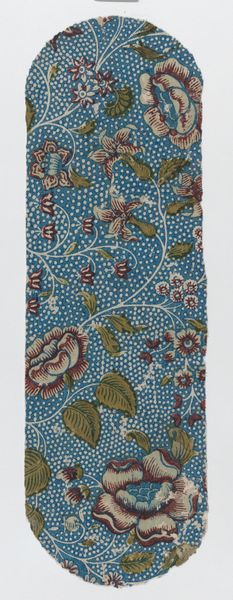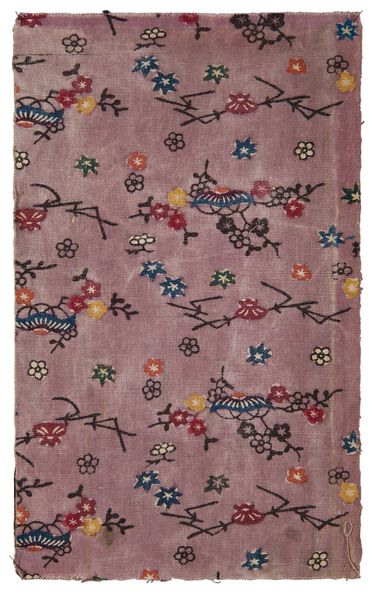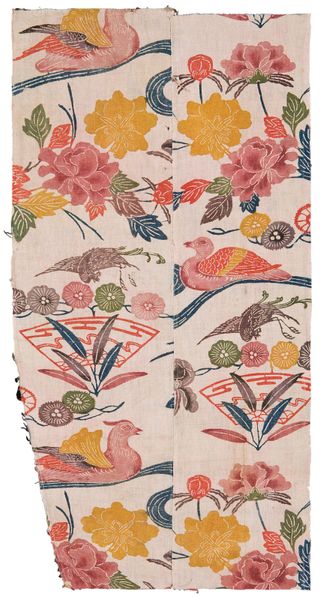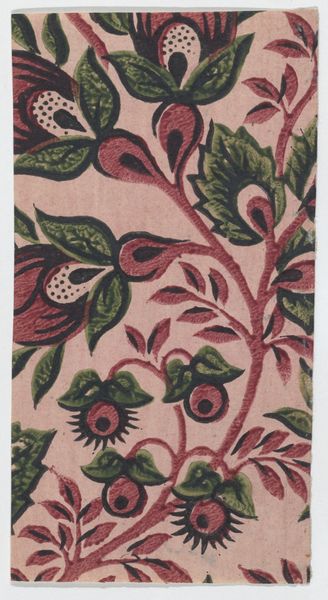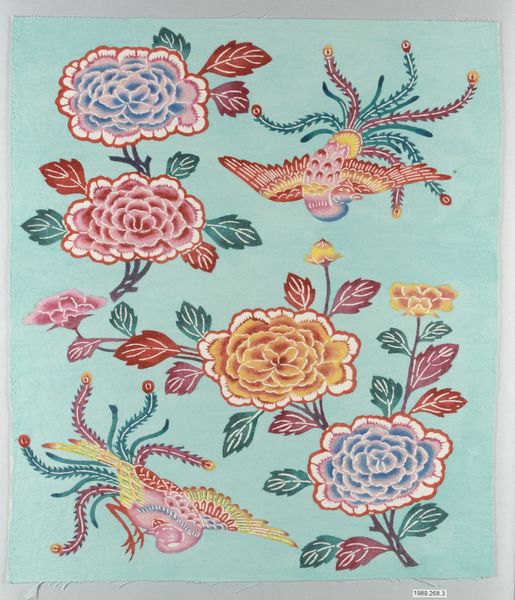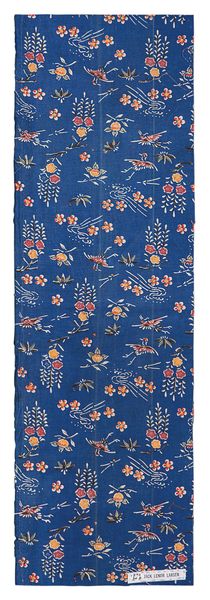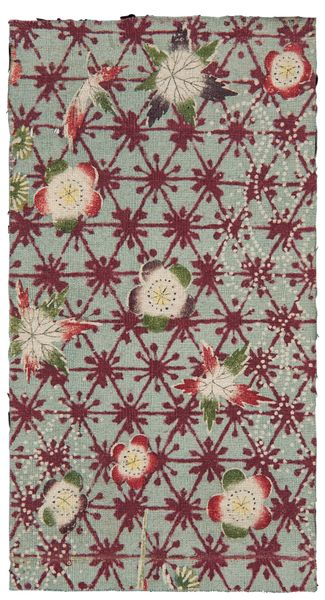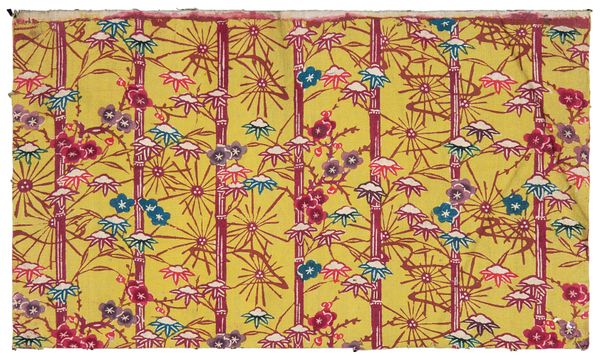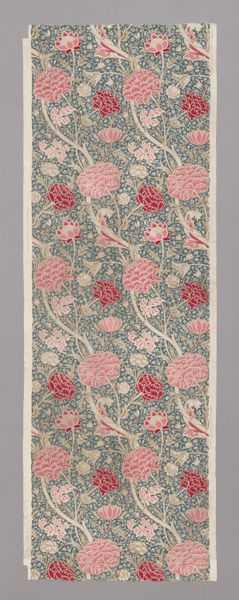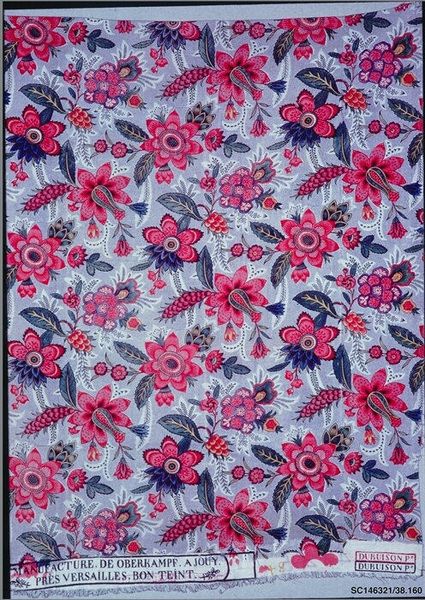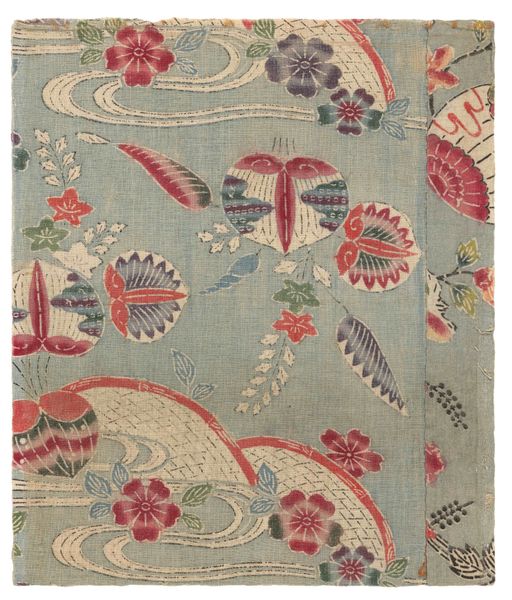
textile
#
textile
#
orientalism
#
decorative-art
Dimensions: 99 1/2 × 14 3/8 in. (252.73 × 36.51 cm) (overall)
Copyright: Public Domain
Editor: Here we have a 19th-century textile fragment, author unknown, titled “Fragment Decorated with Butterflies.” The repeating pattern has a light, airy feel to it, even though it seems quite dense with images of butterflies, flora and cloudlike shapes. What symbols strike you in this textile? Curator: It's fascinating how these recurring motifs establish a visual rhythm but also, more profoundly, tap into enduring cultural symbols. The butterfly, in many Eastern traditions, signifies transformation, resurrection, and even the soul. Given the repetitive nature here, I wonder, is the textile meant to evoke the cyclical nature of life? And notice the other stylized botanicals; are they plum blossoms? Perhaps chrysanthemums? Editor: I think I see plum blossoms… so, if we consider these floral elements, and especially alongside the butterflies, is there an intended meaning that's carried across the design? Curator: Possibly. In Chinese symbolism, plum blossoms represent perseverance and hope, as they bloom even in harsh winter conditions. And while Western art sometimes presents nature as a romantic backdrop, here, it's laden with potent metaphors. Those "cloudlike shapes" you observed can indicate swirling 'qi,' or life force, weaving throughout the entire design. Are you familiar with the concept of 'wabi-sabi'? Editor: I think I've come across it... Doesn't it deal with embracing imperfection and finding beauty in simplicity? Curator: Exactly! The apparent lack of perfect symmetry and regularity might not be a flaw, but a conscious choice, echoing that aesthetic of 'wabi-sabi' we touched on, a world with ephemeral elements that exist transiently with natural and transformative processes. Editor: I see now…so the intentional repetition combined with those less structured botanical shapes almost tells a whole story on fabric, one about constant renewal and change! Curator: Precisely! The image becomes an enduring narrative— a silent conversation bridging centuries. And what do *you* take away from this interplay of imagery?
Comments
No comments
Be the first to comment and join the conversation on the ultimate creative platform.


